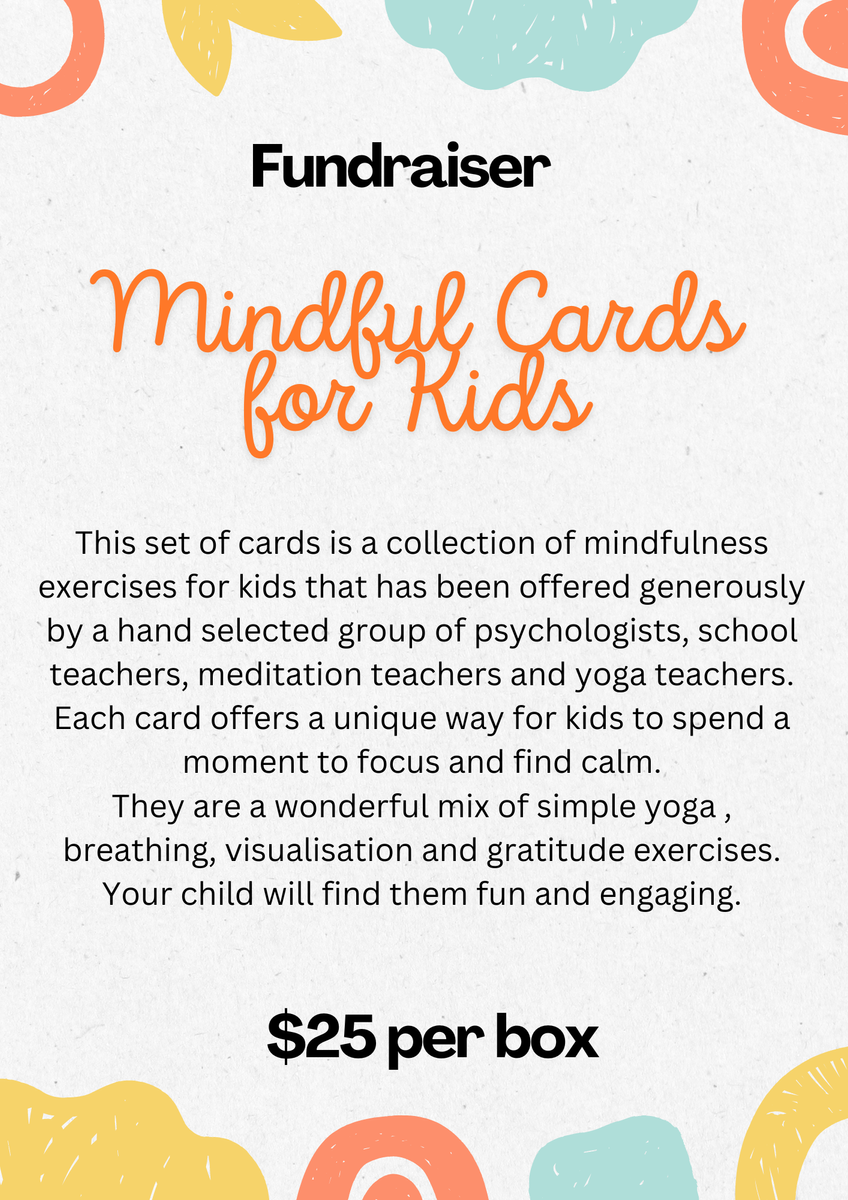Wellbeing
Amanda Howe | Assistant Principal
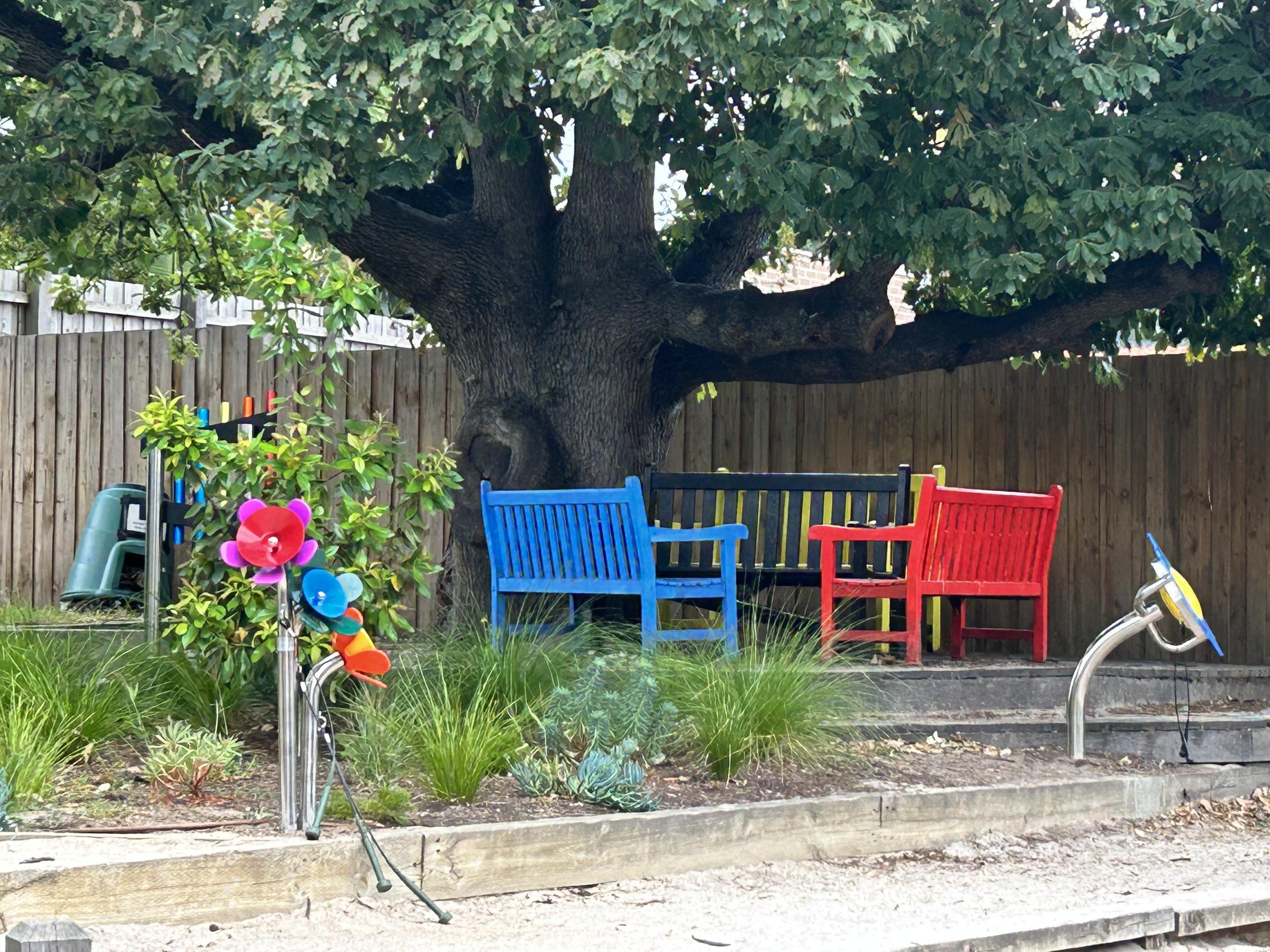
Wellbeing
Amanda Howe | Assistant Principal
We are blessed with wonderful spaces in out playground. Here are some lunchtime photos of students interacting within the Wellbeing garden.
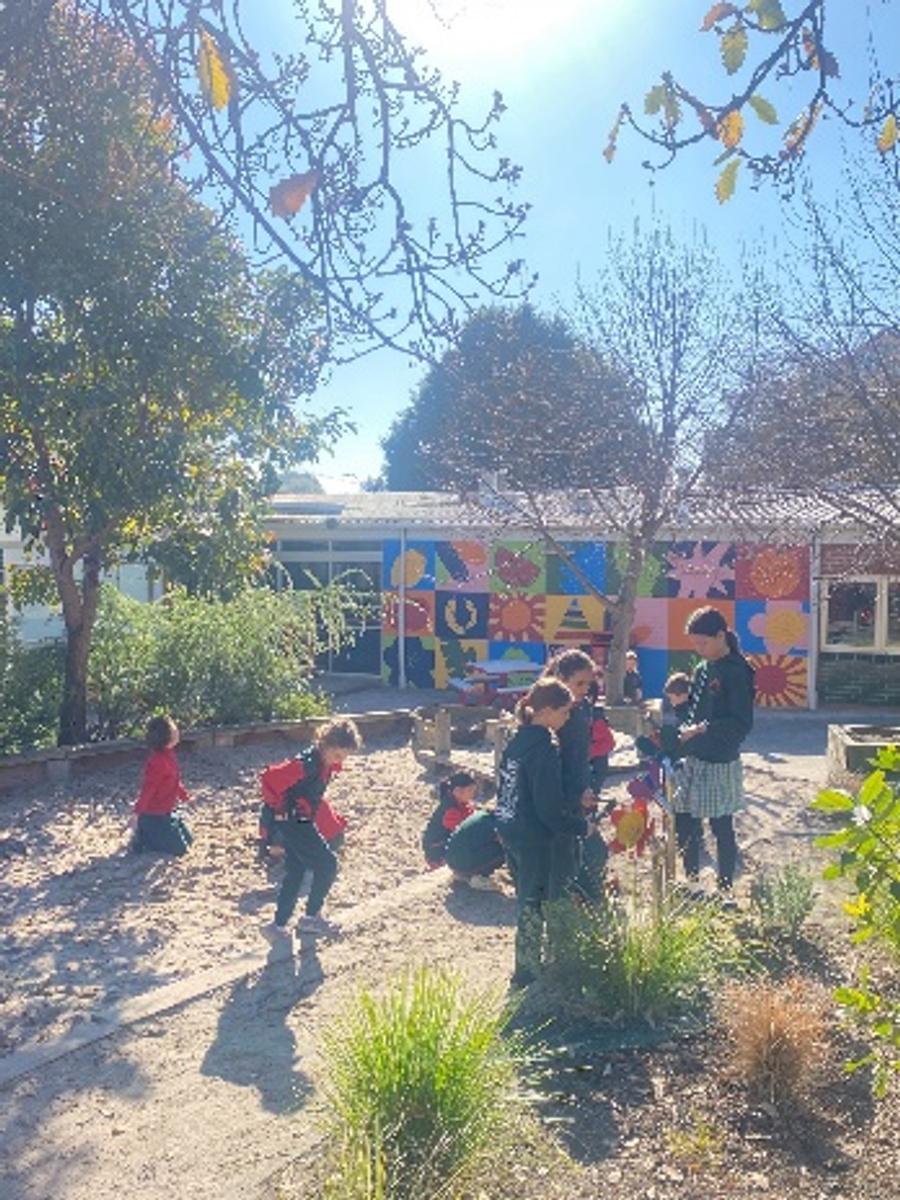

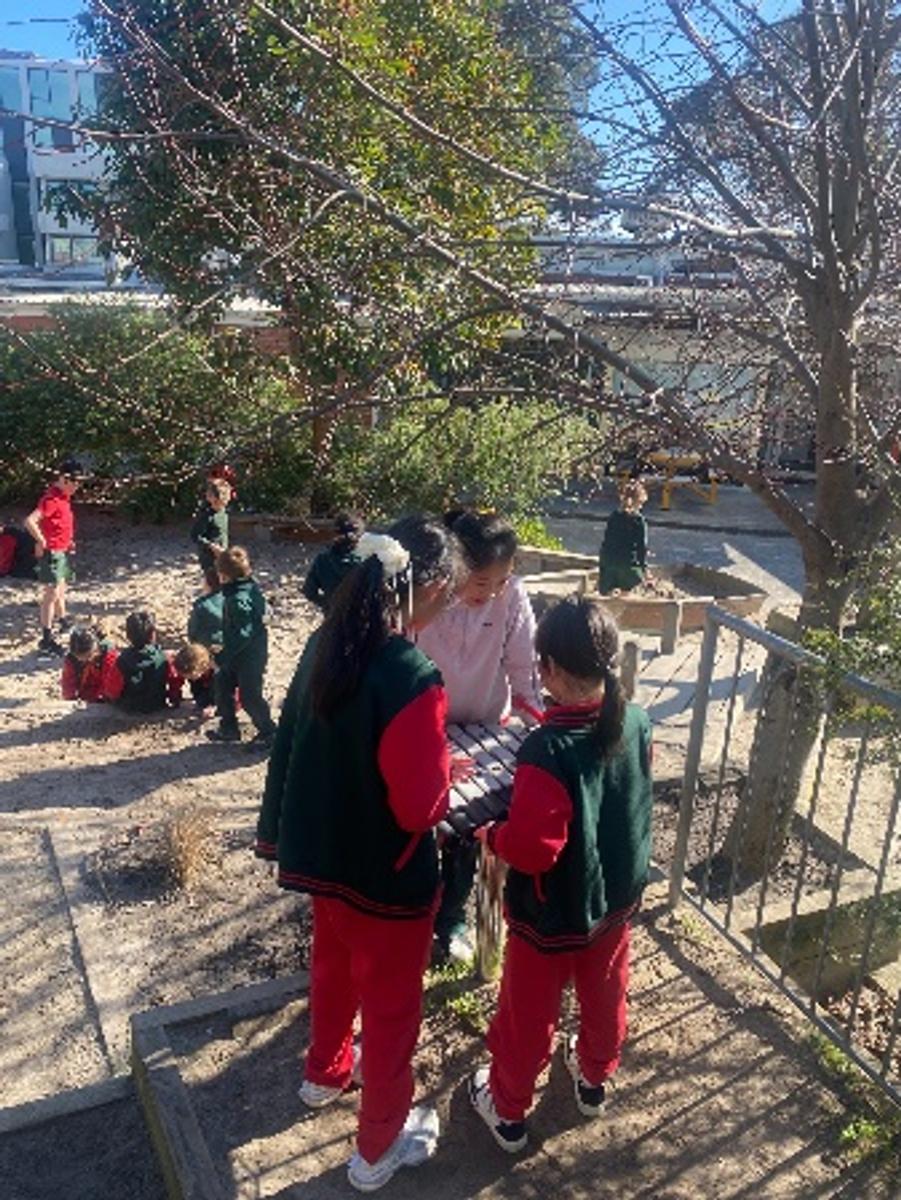

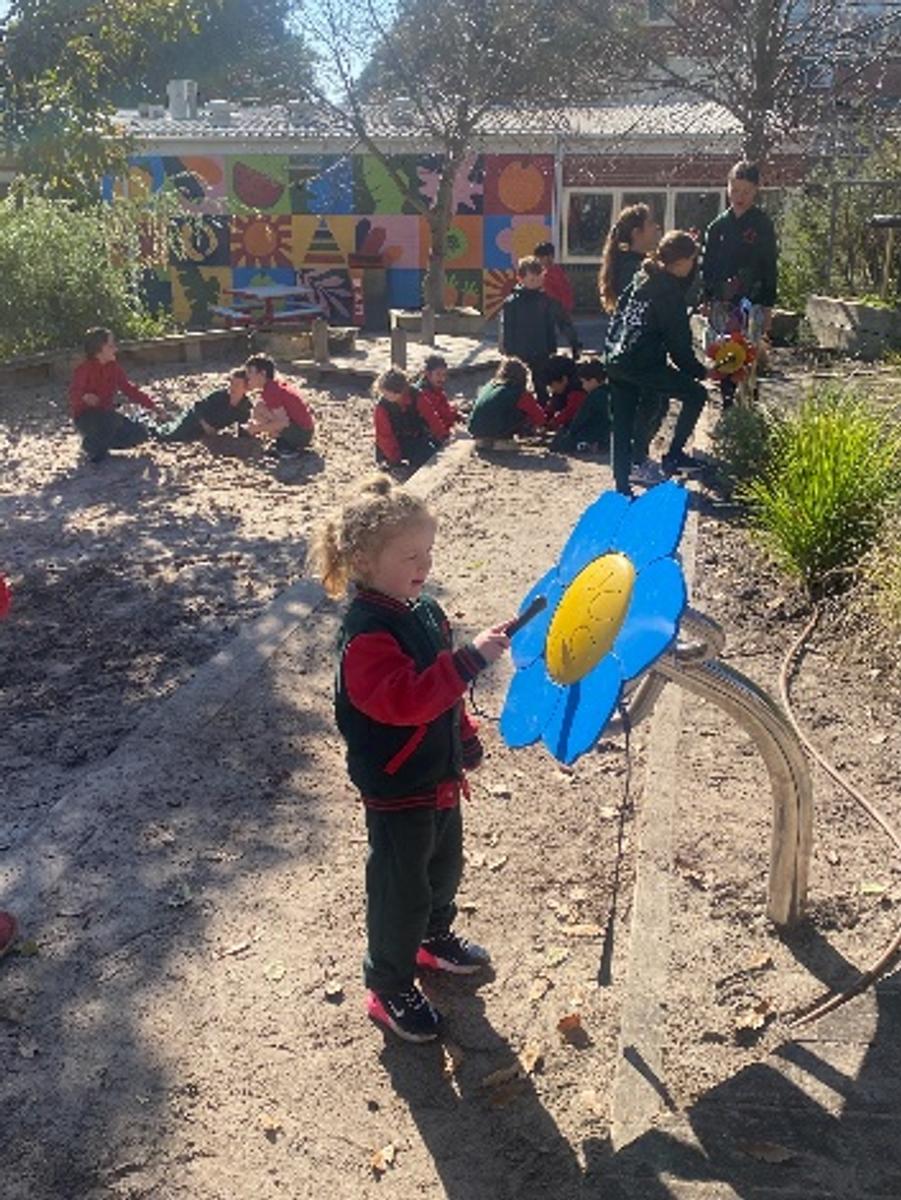

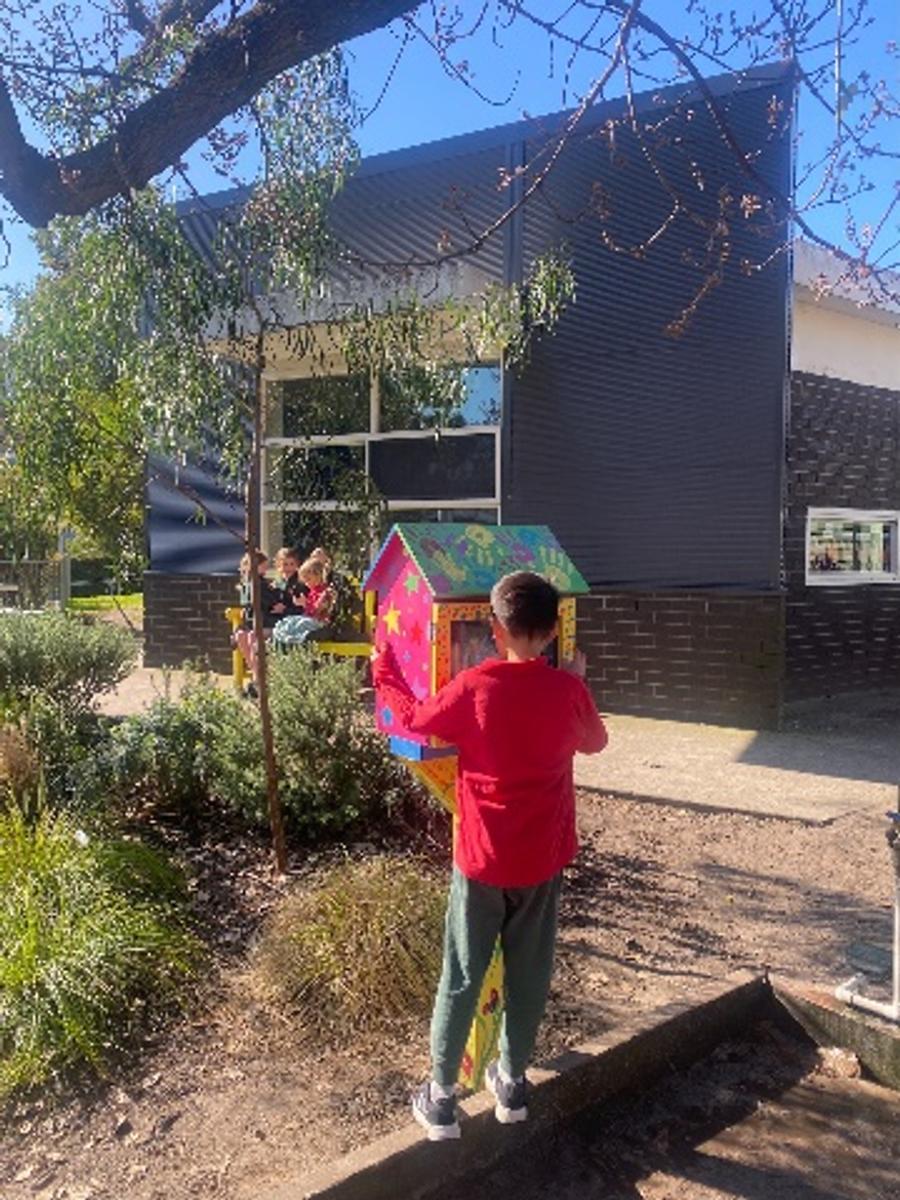



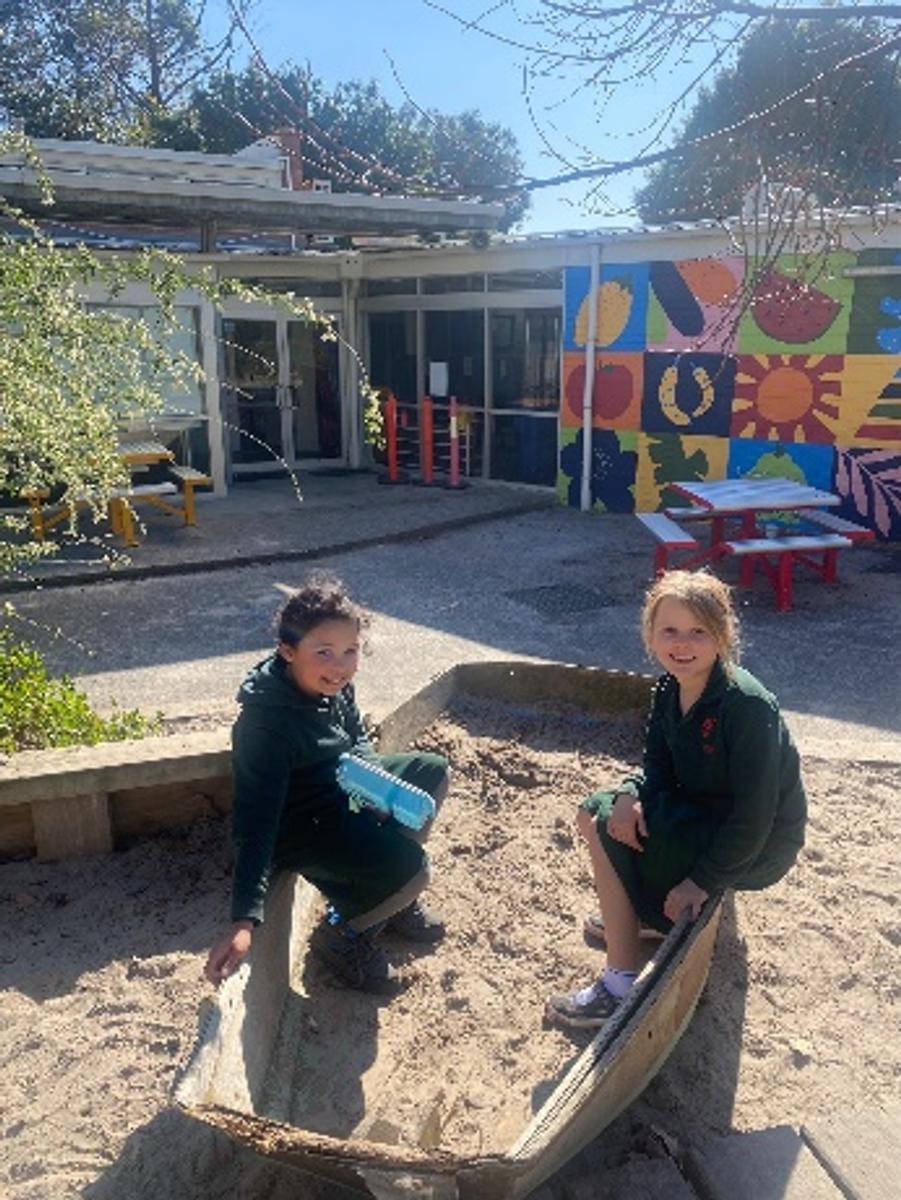

We are so excited to have installed the beautifully decorated book box into our Friendship space. Evie (2C) and her Poppy built, decorated and installed the book box. They also provided the books and games that are stored inside.
From Evie …
My name is Evie and I am in 2C. I created this friendship book box for everyone at school to enjoy. I made it to help people find their friends or for them to have some alone time. I had a meeting with Amanda in 2023 and presented my idea of a friendship book box. Amanda loved the idea and said I could make one for the school.
I did some research on the different styles of book boxes. My Poppy helped me build the book box using wood and his saw. We sanded back the wood and put an undercoat on it.
Next, I invited Cleo, the Friendship Captain over to my place and she helped me paint and come up with ideas. We decided to make it colourful and put flowers and vines on the pole.
Next I thought about what I could put on each side to make it interesting. I did some practice drawings first then used a grey lead pencil to stencil on the box before I painted it. My two little sisters helped me with the painting.
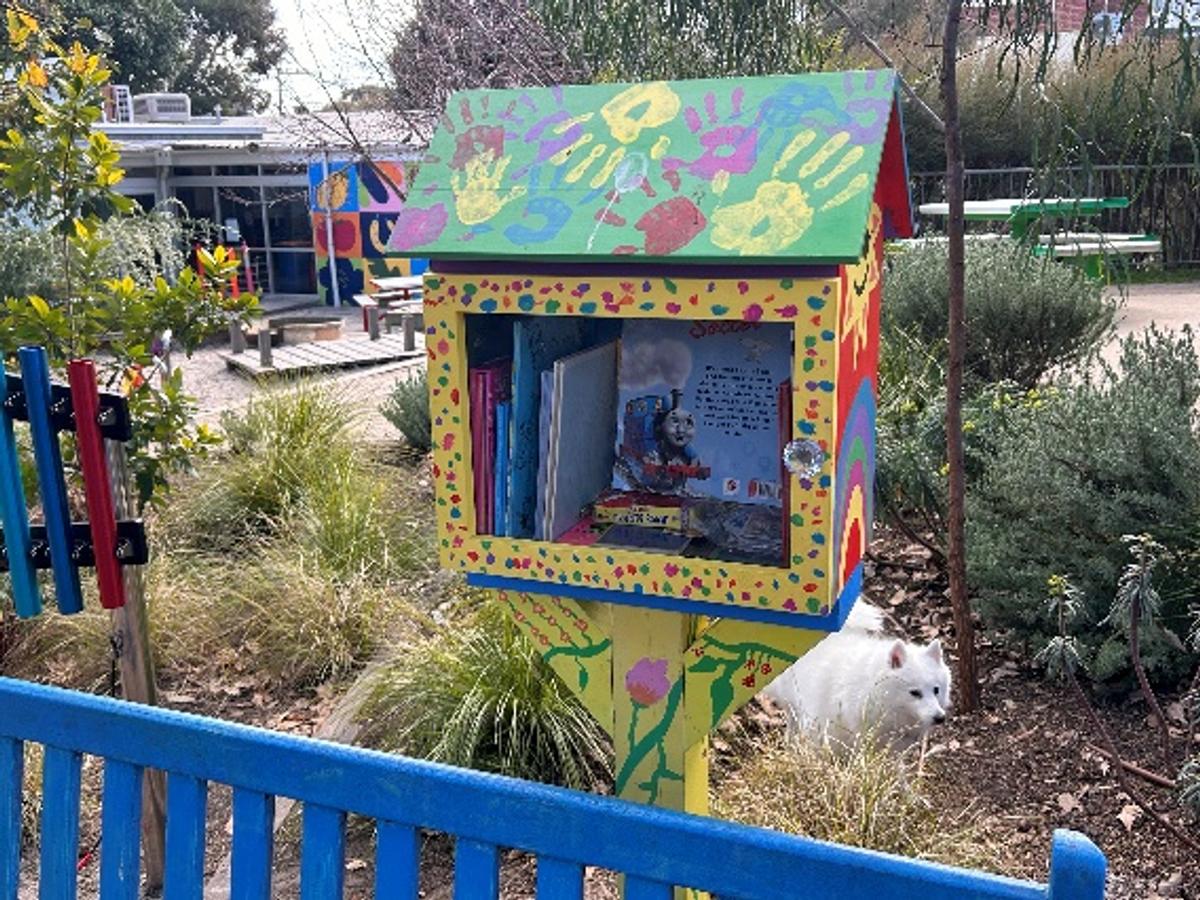

It took me a long time, but it was lots of fun and I’m really proud of how it looks. I hope you like it and use it too.
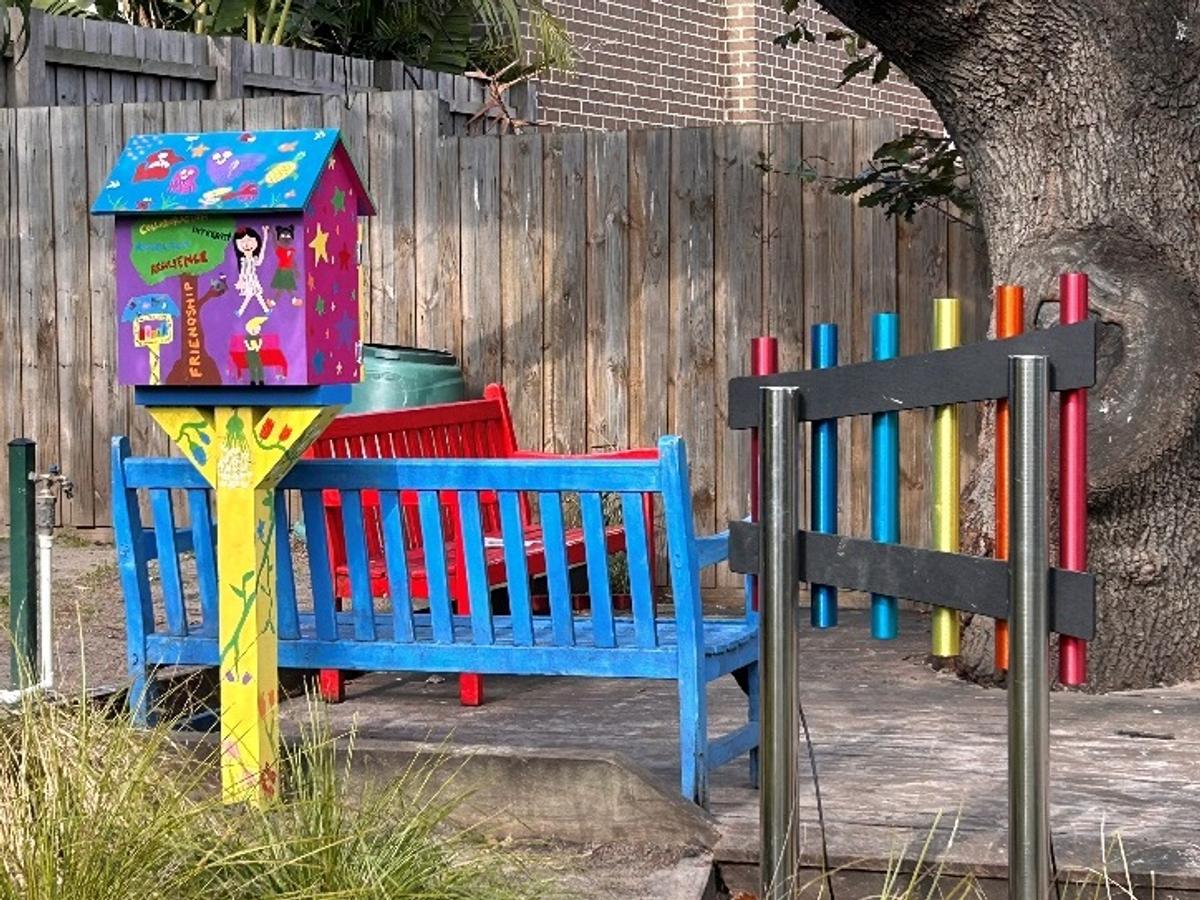

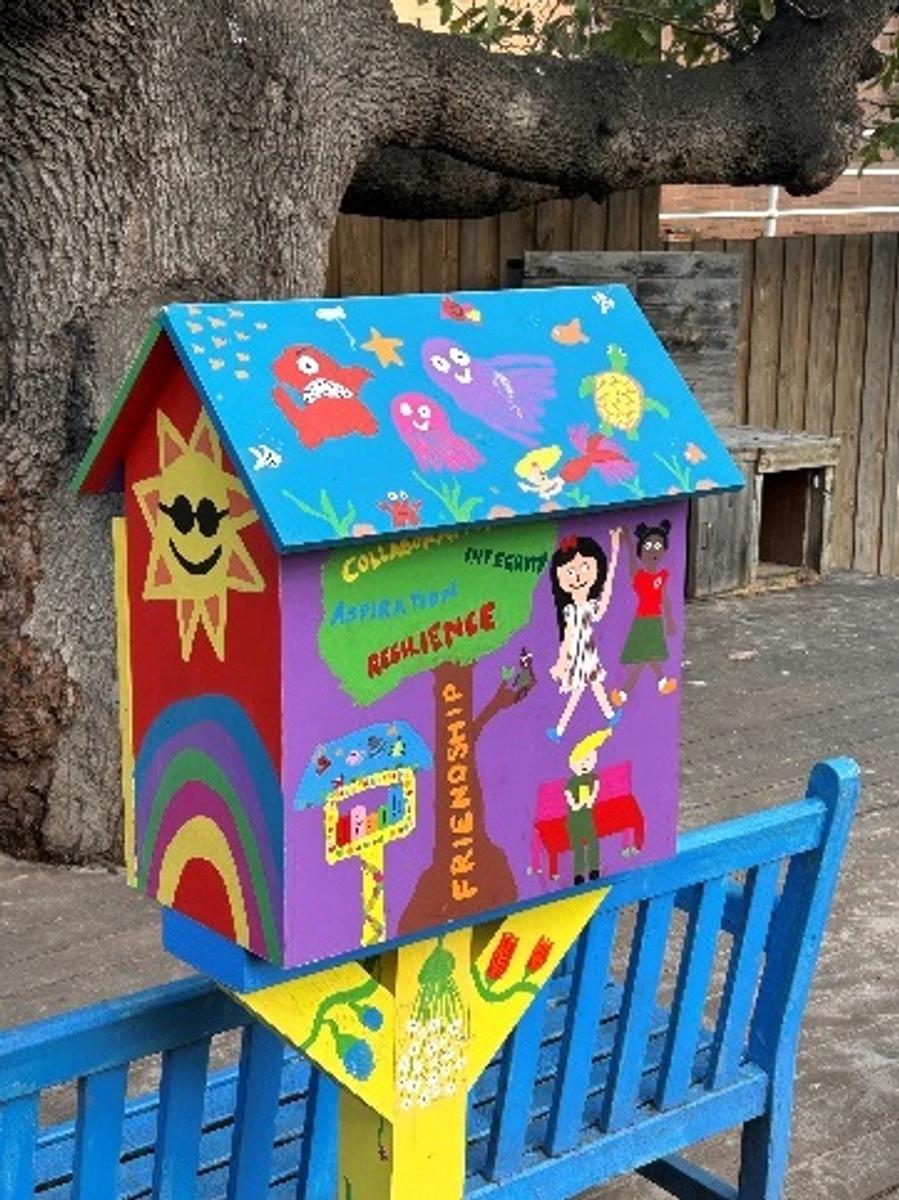

The hands represent collaboration, community and togetherness.
The ocean is for where we live: Hampton, Bayside.
Stars remind us we can all shine bright.
The rainbow and the sun are for happiness.
The Friendship tree – Our school norms help us build good friendships. Friendships are important.
The vines and the flowers on the pole
Thank you to the parents and children who took such good care of our chickens over the break. The chickens are fed, watered and their coop cleaned out daily.
Each term I send out the egg collecting roster and this term the Sign up filled over 80 spaces in under 2 hours. The money collected from the egg sales goes to the upkeep of the chickens. Thank you to all who support our chickens.
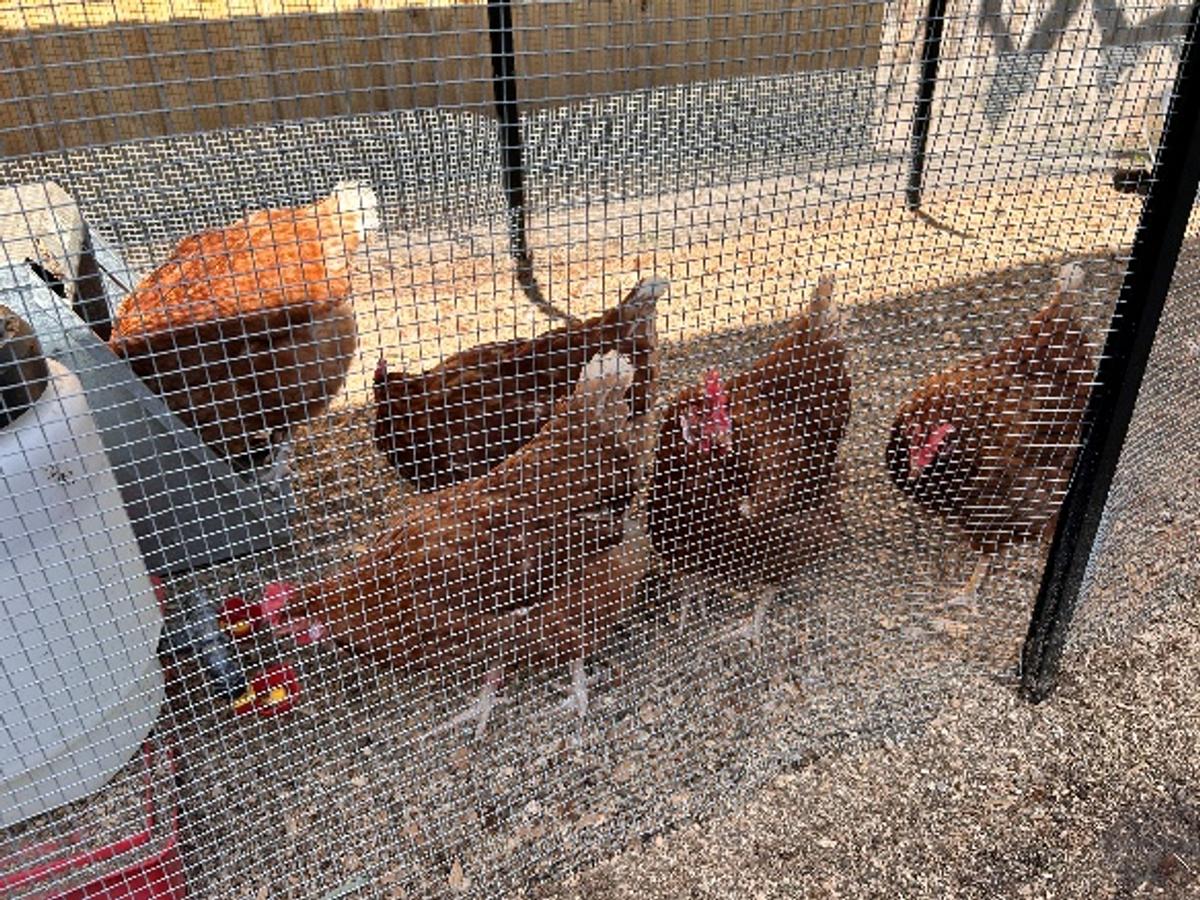

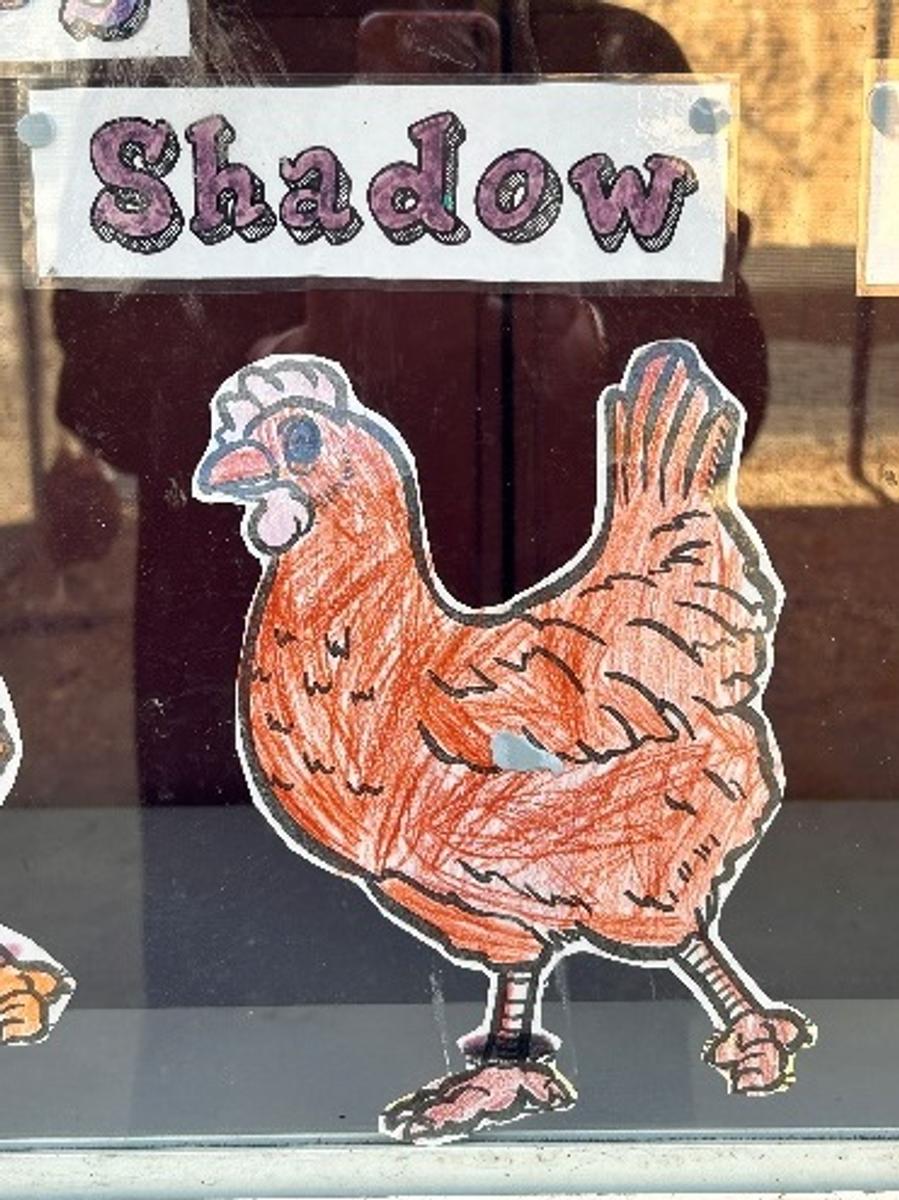

Shadow
Sadly, we said goodbye to Shadow over the holidays. She had a broken leg and would not have been able to move around the coop.
On Tuesday the 25th June, the Playleaders dedicated a whole day with Scott and Sally (who are part of the Resilient Youth program) to learning fun games like Memory Tag and Evolution. Not only have we learnt these extraordinary games, we also learnt the meaning of fairness and teamwork and how to treat the kids when they’re playing games.
Playleaders will take place at Hampton Primary School every day of the week for the rest of Term 3 and into Term 4, running from the start of lunch to halfway through lunch (1:00 pm - 1:25 pm). This exciting program aims to help Foundations to Grade 2’s make friends through a series of engaging games. This exciting event will be held on the school’s basketball court.
Playleaders offer a joyful, energetic atmosphere where children can learn, play, and grow under the guidance of experienced Grade 5’s.
We are looking forward to seeing the Foundations, Grade 1’s and 2’s coming to our brilliantly organised event and them having an interesting and wonderful experience. We are sure that the kids will like the games and will finish with a gleaming smile on their faces.
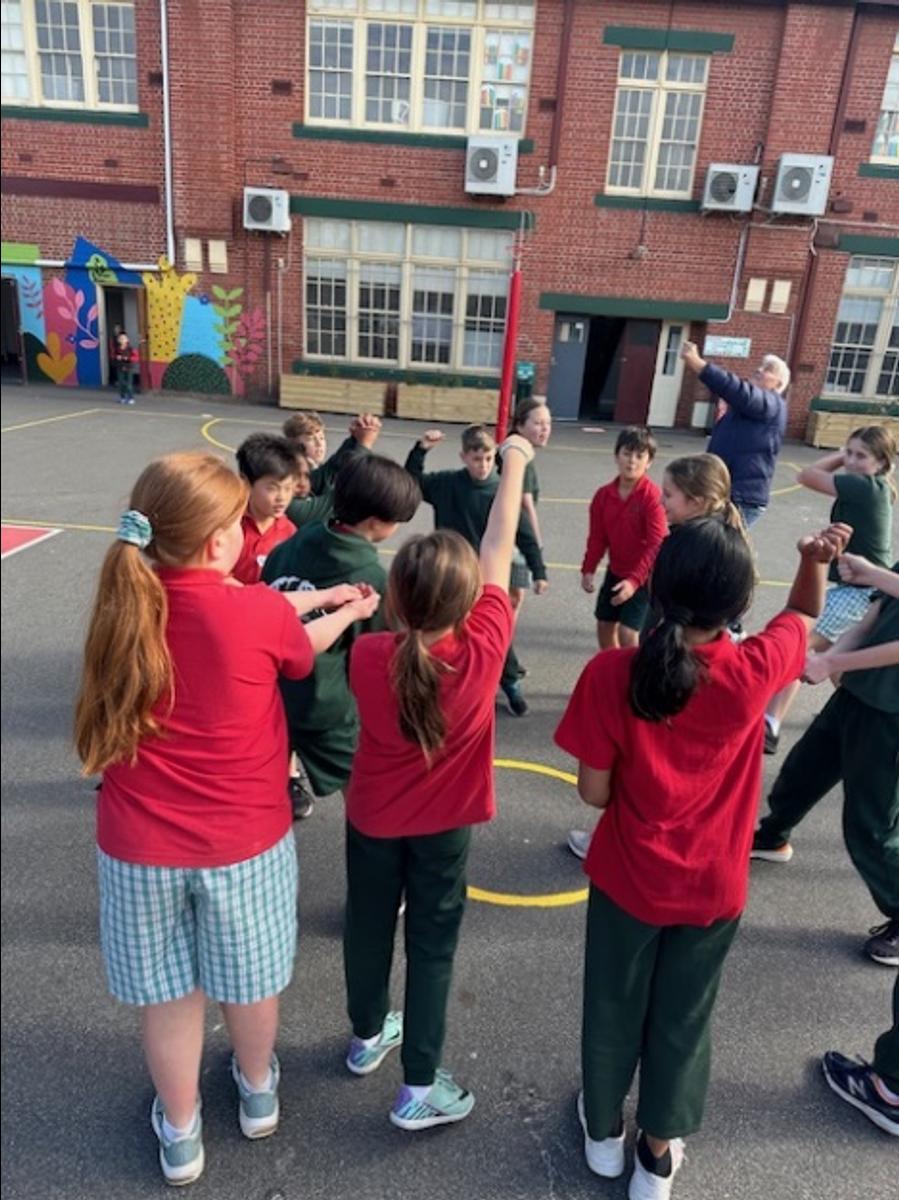



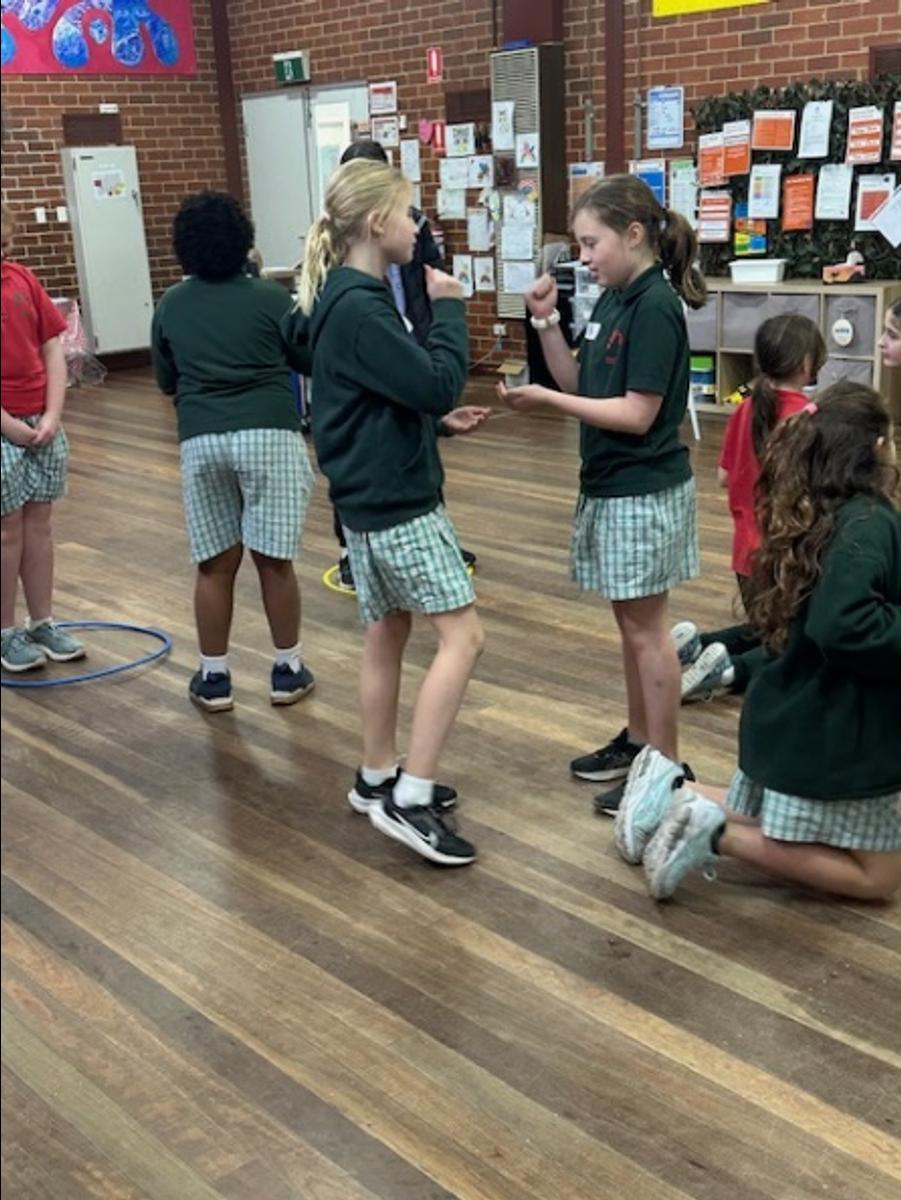



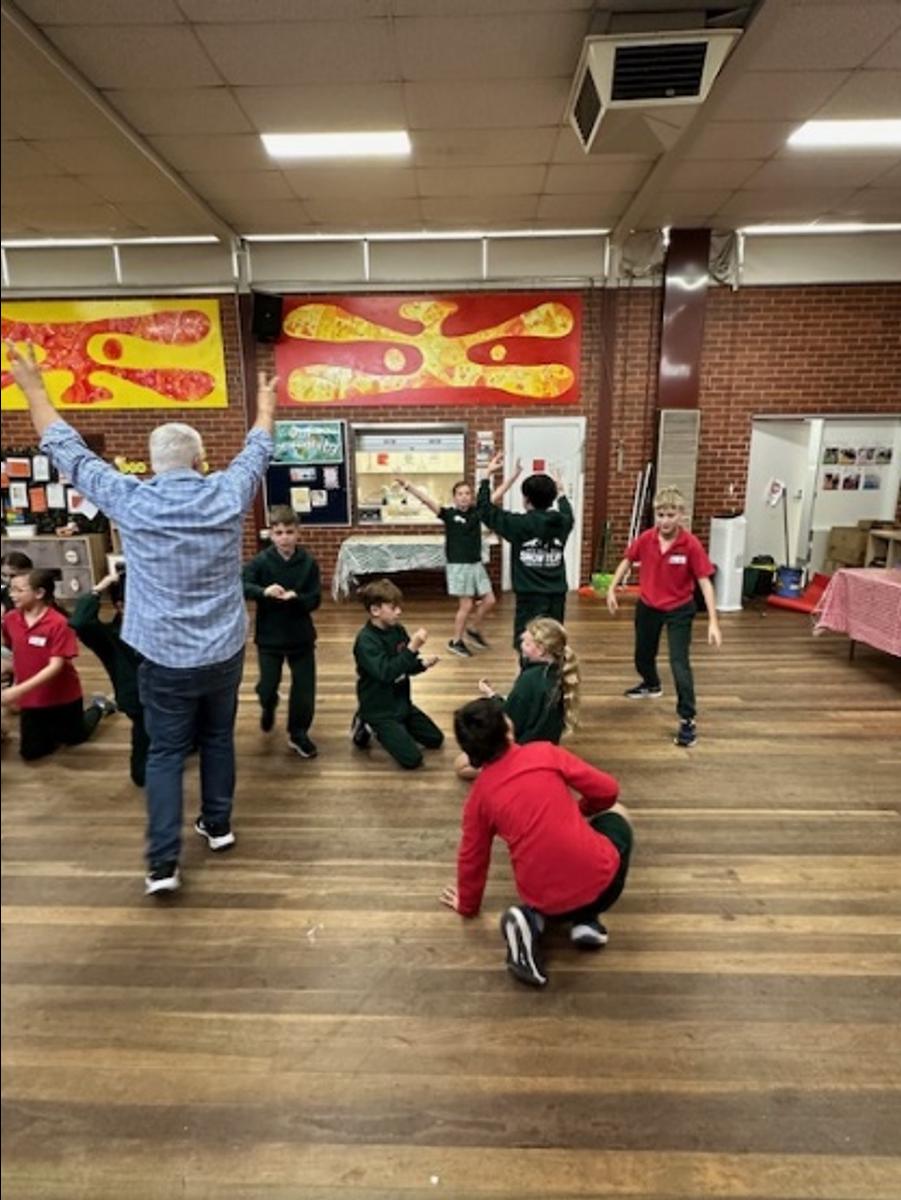

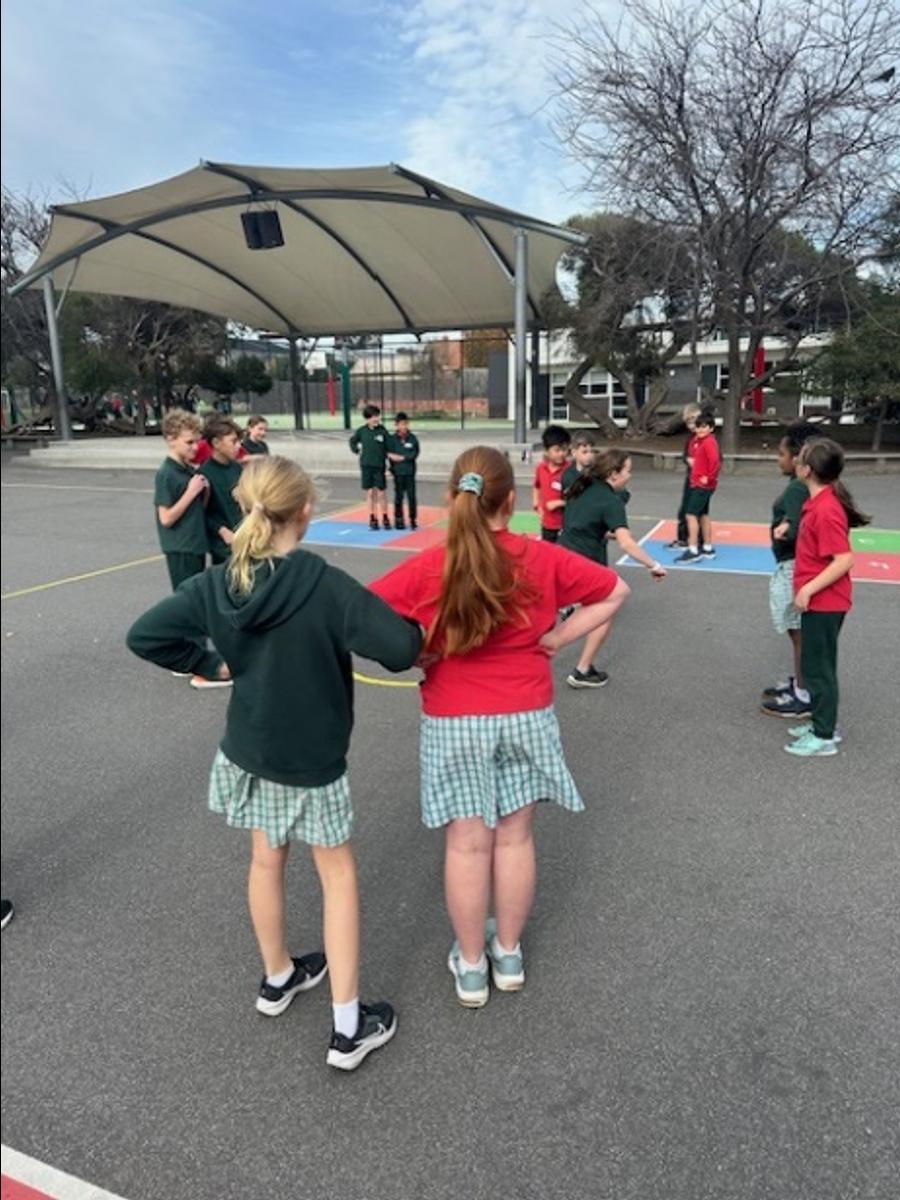

From Bryson and Archie 5
I am Daea and I became an Upstander because I wanted to help reduce bullying All of us in the Upstanders hope to make a change and make the world a better place. What it means to be an Upstander to me is someone who doesn’t just stand by and watch bullying (a bystander) it also means to give everyone a chance and listen to both sides of the story.
My name is Indie and I love new beginnings. I became an Upstander because I want to make a difference at school, at home and in the yard. In the last couple of weeks we have been looking further into bullying and what people feel when it happens to them. We as Upstanders are trying to prevent bullying and teach people to up-stand instead of by-stand. Being an Upstander means being a role model to everyone- you can’t just talk the talk you have to walk the walk! Meaning you have to do what you say you're going to do.
The Upstanders from Hampton Primary School are going to be meeting with 4 other Bayside schools on a special Forum Day at Brighton Town Hall to collaborate on how we spread kindness and stand up for others as well as creating artworks that will communicate our message. The Forum day will be held on September the 11th and it isn’t just about doing artworks, it is about creating new friends. We will be helping each other with ideas on how to be Upstanders and different ways that we stand up for what is right. If there is a choice between being right or kind, we choose kind.
By Daea 5B and Indiana 5B
Do you Know your Child’s Love Language?
Twenty-one years ago, Gary Chapman wrote a book called The 5 Love Languages. In his book, he argued that there are five different ways that we can show someone that we love them, and that each person has their own unique preference for us to show them that love. That is, each person has his or her own love language.
Chapman’s five love languages are:
He suggests that to discover a person’s language of love we should watch the way that they express love towards others, and consider what they ask for from their significant other the most. If they’re a gift-giver, that’s the sign that their language is gifts. If you give them gifts, you’re showing love in their language. If they make themselves available and spend time, that’s what they’ll respond to best.
Often we have problems in our relationships (including with our children) because we show love in our preferred love language, but our loved ones seem unresponsive. They speak a different language and so they’re not aware that we are trying to show them love.
We reach out to touch our teenager and he says, “Hey, don’t touch!” Or we give and give and give to our school-aged children and they never say thanks or show any love to us, because they want our time instead.
An alternative arrangement?
While I really like the idea of love languages, there is a lack of research to support the ideas. Current research gives us clues as to how these love languages can be modified to strengthen relationships and improve the way we show love. Here’s how I would arrange them – rather than having five languages to choose from, I believe that all people (including partners/spouses, and children) have two universal “love languages”.
These are:
In addition, I see three additional languages that may or may not be applicable to others. Some may respond well to one, while others may respond well to all three. They are:
How they work
I believe that every single person on the planet – and especially our children – respond to the two languages of time and understanding. An old saying reminds us that “to a child, love is spelled T-I-M-E.” I know of no intervention more powerful than simply spending time with another person to create a strong and positive relationship.
I have written dozens of articles about understanding. The idea features consistently in my books. But when our children are struggling, we rarely show them high levels of understanding. Instead, we often find ourselves reprimanding. Alternatively, we turn away from them and tell them, “you’ll be right”, or if we are less charitable, “toughen up, princess.” I believe that it is more important to humans to feel understood than to feel loved.
The three additional languages work like this:
Show me
Some people, children included, feel most loved when we show them our love. Sometimes this might be by giving gifts. Other times it may be by making some kind of sacrifice or special effort to help them or please them. (We should remember that children have a tendency to simply expect us to do things for them, so we may not see this as their language of love until they’ve left home and become adults themselves!).
Tell me
Being told “I love you” is all some children (and adults) need to feel loved. They don’t need gifts or special or expensive experiences. A love note, an acknowledgment, a statement of appreciation or affirmation; these are the expressions of love that create a sense of love in a “tell me”.
Touch me
The “touch me” language is simple. These are the huggers, the snugglers, the strokers, the caressers. These are the ones who, if you walk past them without squeezing their elbow or running your finger across their shoulder or neck, will wonder if they’ve done something wrong. The touch me language craves physical contact to express love.
What are your family members’ love languages?
Sometimes it can be tricky to work out what language of love your family members respond to best, and understand the most. Focus on the first two, and experiment with the next three. Watch how they respond. And look for the ways that they express their love. It may help to make your family happier.
Justin Coulson - Happy Families
